Last Updated: September 3, 2024
You’ve got a blank notebook, a pen, and a mind full of thoughts. What are the best ways to get those anxious thoughts out of your head and onto the page? How can you use journaling to calm anxiety?
Keeping a journal is a helpful tool for reducing stress, calming anxiety, and processing your thoughts and feelings (Source). But there are a lot of different journaling techniques you could try. To get the most out of journaling, you should have a clear goal in mind.
Is your goal for journaling to calm your anxiety? Is your purpose to process your busy, anxious thoughts? If you answered yes, then these 5 journaling methods to help you calm your anxious mind are perfect for you.
I’ll talk about the purpose of each journaling method, then provide some tips on how to make the best use of each one. Try them out and see what works for you. But you don’t have to choose only one method. If you’ve got a journal, those blank pages are yours to use in the way that’s most helpful for you. So mix and match as much as you want!
This article contains affiliate links. As an Amazon Associate I earn from qualifying purchases. If you buy something using the links, I may earn a commission at no extra cost to you. Read the full affiliate disclosure.
1. Stream of Consciousness Journaling
One of the best ways to get your anxious thoughts out of your head and onto paper is to just write. Stream of consciousness journaling is when you simply write whatever is on your mind, without editing yourself. What you write doesn’t even have to be grammatically correct! The purpose is just to record your thoughts.

Writing your stream of consciousness is a useful way to notice what you’re actually thinking about. We often have a lot on our minds, but we don’t stop to notice and pay attention to our thoughts.
So writing your thoughts down gives you a way to process whatever it is that you can’t stop thinking about. You can reflect on different thoughts, explore your ideas about them, and figure out what you’re going to do.
However, this technique could be difficult for people with a lot of racing thoughts. If your mind can’t stop to focus on just one thing at a time, you could feel overwhelmed if you try to write down everything that comes to mind. If that’s the case for you, using focused journal prompts (see method #2) might be a better technique for you.
Tips for Stream of Consciousness Journaling
If you want to try stream of consciousness journaling, it really is as simple as picking up a notebook and starting to write. Here are some tips to help you get the most out of it:
- Don’t edit or judge yourself while you are writing. One of the key benefits of this form of journaling is that you have the freedom to write whatever is on your mind. Your journal is your own personal, unlimited space, so don’t limit yourself! (Source)
- Explore thoughts and go down rabbit trails. Write more about the ideas that surprise you when they show up on the page. See where they take you. However, if a certain train of thought starts to make you feel anxious or stressed, pause, take a step back, and write about something else.
- Use stream of consciousness journaling to uncover how you really feel about something. Sometimes we don’t know how we’re feeling until we process it verbally. So, keep writing until you can see a theme and start to identify how you feel. (Source)
Quality Journals for an Enjoyable Writing Experience
2. Using Journal Prompts
If you’re hoping to discover why you feel the way you feel about something, responding to journal prompts can help you reflect. Sometimes you’re not sure what to write about, and you need a bit of guidance to get your thoughts flowing.
Using journal prompts is especially helpful for people with busy minds, because it gives you just one thing to focus on. Each journal prompt is just one question to answer, so you can give your full attention to it in the present moment. This is a great way to use journaling to calm anxiety.
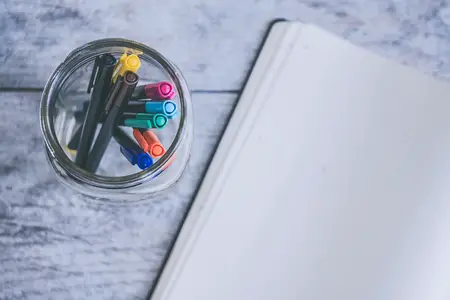
There are different types of journal prompts, so you’ll want to look for the kinds of questions that really inspire you to reflect.
If you’re looking for some journal prompts to help you become more aware of your emotional responses and how to better manage them, you can download my 30 Journal Prompts for Emotional Awareness and Self Care. Or, if you want to reduce stress by giving yourself grace instead of having unrealistic expectations of yourself, try my 30 Self-Compassion Journal Prompts for Stress Relief:
Click Here to Download the Free PDFs:
30 Journal Prompts for Emotional Awareness and Self Care
30 Self-Compassion Journal Prompts for Stress Relief
Some other categories of journal prompts are:
- Journal prompts for personal growth and self care
- Journal prompts for mental health and anxiety
- Gratitude journal prompts
(The links above go to my Pinterest boards, where I collect journal prompts in those categories! Click here to follow Calming Grace on Pinterest.)
Tips for Using Journal Prompts
- Set aside time and space for journaling. If your environment is distracting in any way, it will be hard for you to relax, focus, and let yourself reflect. So, find some time when you can be alone. Then, do something that helps you feel calm. Maybe light a candle or put on some relaxing music (I really like my relaxing instrumental and soft piano playlists).
- Be honest. Answer the questions with as much honesty and transparency as you can. Your journal is for your eyes only, so feel free to explore and let yourself respond to the questions in the most “you” way possible.
- If you find yourself getting anxious about a prompt or something you wrote, take a break. Go and do something that helps you calm down. When you come back to your journal another day, try one of the other methods, like gratitude journaling (see method #4). It’s good to know yourself, but too much introspection can make you focus too much on the negative, when the goal is to feel inspired by the positive.
3. Productive Journaling (Bullet Journaling)
Maybe, when I say “productive,” “calm” isn’t the first word that comes to mind. But the reality is that for a lot of us, it’s hard to be totally calm when we have a long to-do list staring us down.
For some people, just reflecting on your thoughts and feelings isn’t enough to help you calm anxiety. You have things to do, places to go, people to meet! And if you don’t do something about those things, they’ll be bouncing around your head and keeping your mind busy. If this sounds like you, productive or bullet journaling is probably a good fit.
Productive journaling focuses on helping you get things done. In a productive journal, you’ll probably see things like to-do lists, calendars, and goal trackers. There are several different methods, but the Bullet Journal method dominates in popularity and effectiveness.
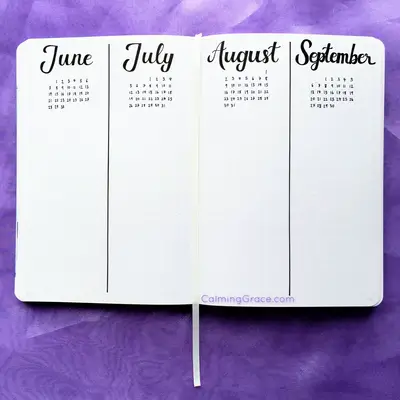
Using a pre-printed planner or agenda could also count as productive journaling. However, depending on how you use it, it might be missing the reflective aspect that is really the key benefit of journaling. So be careful with the planner you choose—or keep a journal that’s separate from your planner. (That’s why I love Bullet Journaling—it brings the two together into one notebook.)
Tips for Productive/Bullet Journaling
- Make it a habit to write in your journal every day. Otherwise, if you go a few days without looking at it, you’ll feel overwhelmed when you try to catch up. It’s even better if you keep your journal handy at all times! That way, you can quickly pull it out and write something down—whenever you have a new idea, a new task, or a new event on your calendar.
- Don’t stick too strictly to any one productive journaling method, because it could be limiting. For example, the Bullet Journal method provides a nice structure, but if you try to follow Ryder Carroll’s original framework to a T, you won’t have much room for creative self-expression. You’ll have to deviate from it a bit to make it work for you.
If you want to go deeper in using Bullet Journaling to calm anxiety, you can get my free 5-day email course that will teach you specifically how to do this. I’ll teach you the techniques I’ve learned in 4 years of Bullet Journaling that are effective for reducing stress and calming anxiety:
For more tips on Bullet Journaling, check out these blog posts:
- How to Start a Bullet Journal: Complete Setup Guide (Plus 50 Page Ideas!)
- What Are the “Bullets” in a Bullet Journal?
- 10 Signs You Should Use a Bullet Journal
4. Gratitude Journaling
We so often go through the motions in life without pausing to take it all in. We rush from task to task and never stop to think about all of the blessings in our lives. This is where gratitude journaling can make a big difference.
Gratitude journaling simply involves taking a couple of minutes every day to write down a few things that you’re grateful for. Cultivating a grateful attitude helps us focus less on our worries and anxieties, and more on all the beautiful things that we experience every day.
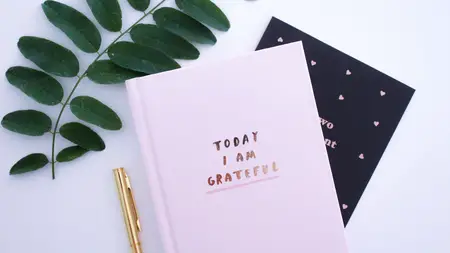
There are several different ways you could do it, for example:
- Keep a separate journal where you just write about what you’re grateful for
- If you use a Bullet Journal, create a monthly or weekly page spread for gratitude
- Designate a section of your journal where you write what you’re grateful for in list form
- Start with gratitude every time you sit down to write a new entry in your journal
Keeping a gratitude journal comes with amazing psychological benefits. In an entertaining TED Talk about happiness and productivity, researcher Shawn Achor pointed out that gratitude can help to “rewire your brain” for optimism. If you write down 3 new things you’re grateful for every day for 21 days, your “brain starts to retain a pattern of scanning the world not for the negative, but for the positive first.”
So, if your purpose for journaling is to calm anxiety, gratitude is an excellent way to do this. If you have a busy mind, gratitude journaling will train you to scan through your thoughts and focus on the positive and good.
Tips for Gratitude Journaling
- Be consistent, whether you choose to write in your gratitude journal every day, three times a week, or just once a week. The more consistently you reflect on what you’re grateful for, the more positive effects it will have in your life. If you do it in the morning, it will create a positive frame for your day. (Source)
- Try to elaborate on the reasons why you’re grateful for each thing. It’s better to go into more detail about a few things than to try to write a long list without much depth. (Source)
- Write down new things that you’re grateful for every time. If you run out of ideas, you’re not thinking broadly enough. Think about everything from the little things, like the yummy sandwich you ate for lunch, to the bigger things, like a person who has made a positive impact in your life. If you need more ideas, check out my Pinterest board of Gratitude Journal Prompts.
Guided Gratitude Journals to Encourage Consistent Reflection
5. Creative Journaling
The final way to use journaling to calm your anxious mind is creative journaling. Maybe when I said “creative,” you thought, “But I’m not artistic!” That may or may not be the case, but don’t try to tell me you’re not creative! Creativity is an innate human trait. There are several different ways that you can be creative without necessarily being artistic.
Creative journaling gives you a chance to take a break from life, relax, and let your imagination take over. It helps to calm anxiety and reduce stress by giving you something to focus on in the present moment. Also, when you’re doing something creative with your hands, it gives your mind time and space to process thoughts in the background.

Here are some different creative activities you could do in your journal (this list is not exhaustive!). You could try a few of them and find one or two that you truly enjoy:
- Writing stories
- Drawing or doodling
- Writing lists or collections
- Designing and coloring geometrical patterns
- Hand lettering or calligraphy
- Scrapbooking or paper crafting
- Personal memoir writing
- Drawing comic strips
- Coloring or painting
- Writing inspirational quotes
Creative journaling is also a form of self care. When you do something that you truly take delight in, you are giving your overall mental health a much-needed boost of joy. Use it in combination with the other 4 journaling methods listed above to have a truly calm mind.
Fun Supplies to Inspire your Creative Journaling
Tips for Creative Journaling
- As with the other methods, don’t judge yourself! Let your creativity flow, and let yourself make mistakes. Chances are you’ll learn something new about yourself on the way.
- If you’re using creative journaling to give your mind space to process thoughts in the background, you can follow it up with stream of consciousness journaling (method #1) to summarize what was on your mind.
- If you use a Bullet Journal, there are countless ways to use creativity in your page spreads. Use your Bullet Journal as a space for creative self-expression with hand lettering, doodles, designs, quote pages, and more! Follow my Pinterest board of Bullet Journal Inspiration for lots of great ideas.
Journaling to Calm Anxiety
Keeping a journal brings amazing benefits for mental health and well-being. Using these 5 journaling methods will help you reduce stress, calm anxiety, and reflect on your life.
The 5 journaling methods work at different times for different purposes. Using them in combination will help you process your thoughts and feelings, and you’ll start to experience your mind being a more peaceful and calm place.
I hope this article has been helpful for you. Let me know in the comments below: Which of these 5 methods would you like to try?
P.S. If this post was helpful for you, why not bookmark, share, or save it to Pinterest for future reference:
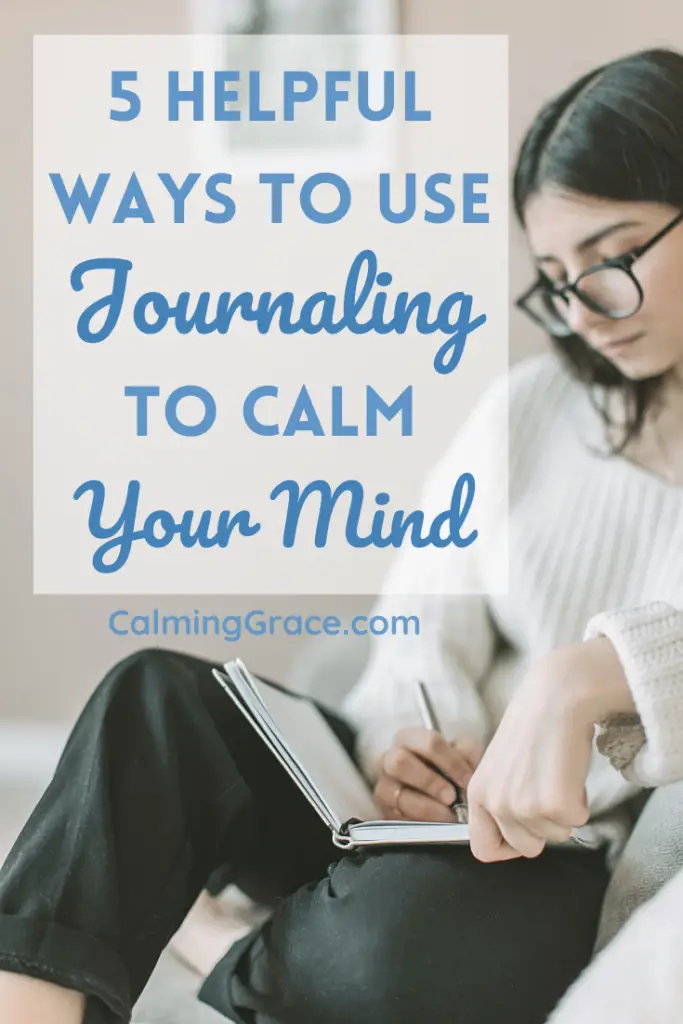
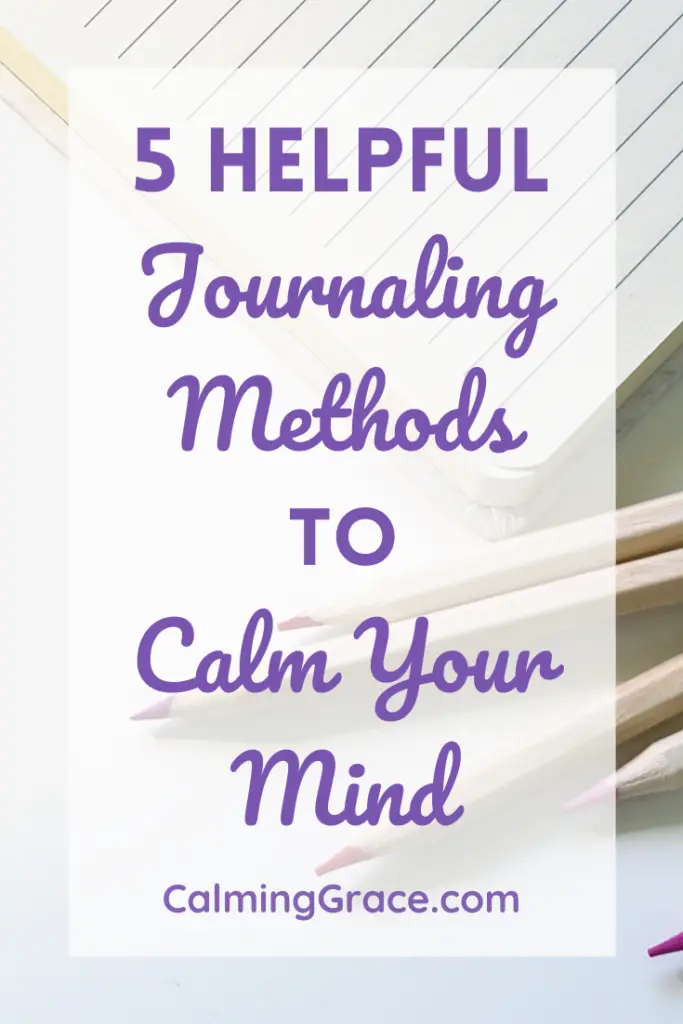
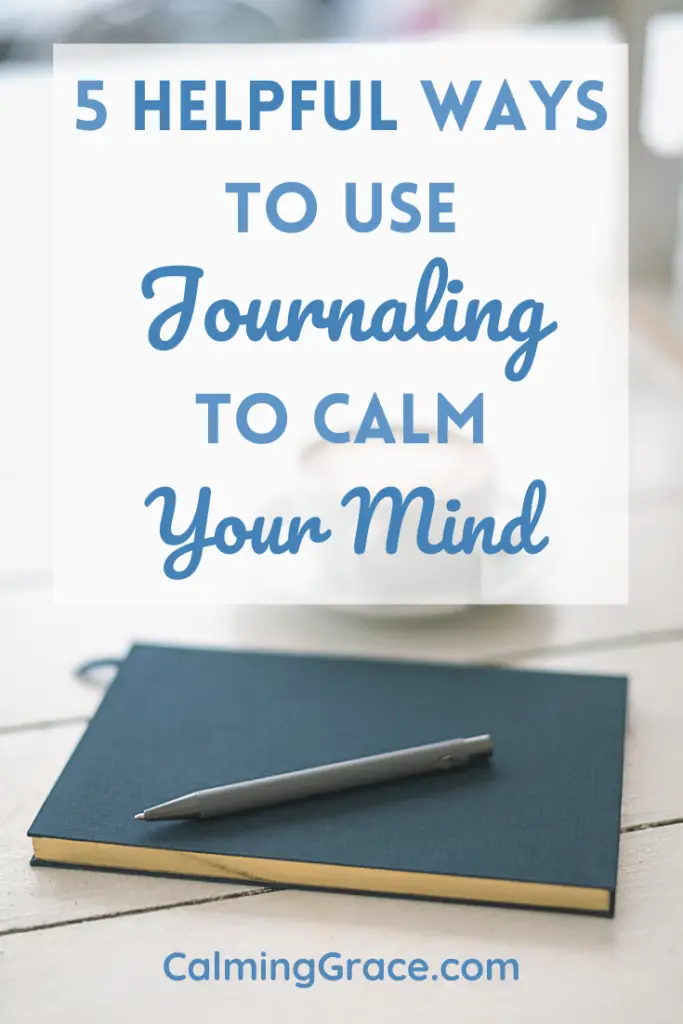

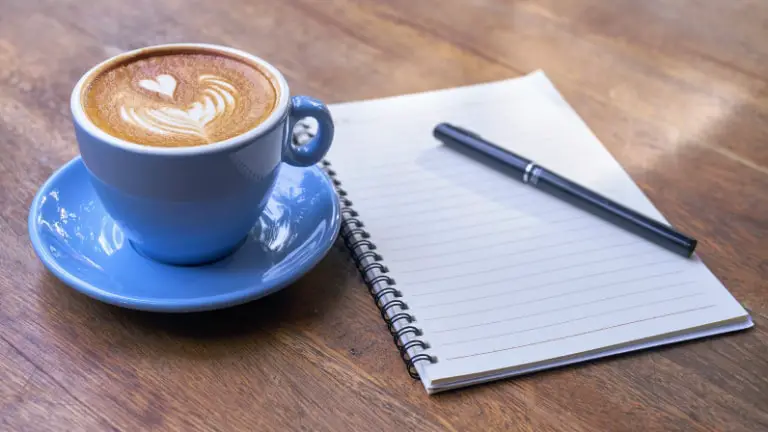












Love the ideas with structure and suggestions. I sort of just write (like your first tip) but see some great advantages to the prompts, etc. Thanks for sharing!
Thanks Brenda! Glad it was helpful!
I do a lot of stream journaling. I really appreciate these tips and have definitely been wanting to do more creative journaling!
Yes Jenn, me too! I don’t always take the time to do creative journaling, but I want to do it more because it helps me relax and refresh!
I’m not extremely creative but I like the idea of a gratitude journal. The Lord calls us to live a life of Thanksgiving. Thanks for sharing.
That’s so true, Arrica. And I love how He designed our minds to benefit from gratitude!
Great post, Sarah. The tips you give to accompany each journal method are really good applications.
Thank you, Baz! I know the tips have helped me in my own journaling so it’s great that they are applicable for you too!